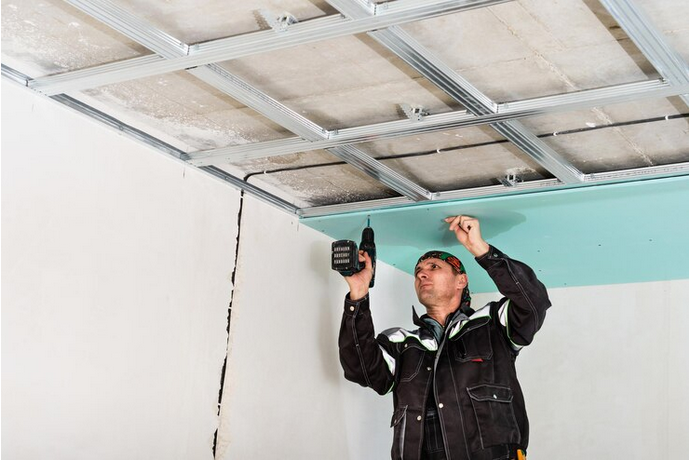Introduction:
Insulated plasterboard, a versatile building material, is a combination of traditional plasterboard and insulation materials like expanded polystyrene or polyurethane foam. This hybrid product offers both thermal and acoustic benefits, making it a popular choice in construction. However, the installation and fixing of insulated plasterboard require careful consideration and specific techniques to ensure optimal performance. This exploration delves into essential tips for fix insulated plasterboard, shedding light on key considerations, materials, and techniques that contribute to a successful installation.
Understanding Insulated Plasterboard:
Insulated plasterboard serves a dual purpose by providing both structural support and insulation in one material. The insulation layer incorporated into the plasterboard enhances the thermal and acoustic performance of the building. The convenience of having insulation and plasterboard in a single panel streamlines the installation process, but proper fixing techniques are crucial for ensuring its effectiveness.
Key Considerations for Fixing Insulated Plasterboard:
- Assessing the Wall Structure: Before fixing insulated plasterboard, it's essential to assess the wall structure. Different walls, such as solid walls, cavity walls, or timber-framed walls, may require different fixing methods. Understanding the characteristics of the wall helps in selecting the appropriate fixing technique.
- Choosing the Right Fixings: The choice of fixings plays a significant role in the stability and longevity of the installation. Depending on the wall type and insulation thickness, various fixings like screws, adhesive, or a combination of both may be used. It's crucial to use fixings that are suitable for the load-bearing capacity of the wall and can securely hold the weight of the plasterboard.
- Ensuring a Level Surface: Achieving a level surface is critical for the overall appearance and functionality of the plasterboard installation. Before fixing, ensure that the wall surface is smooth and even. Address any protrusions or irregularities in the wall to prevent uneven pressure points on the plasterboard.
Materials for Fixing Insulated Plasterboard:
- Screws: Screws are a common and reliable choice for fixing insulated plasterboard. They provide a strong and secure attachment, ensuring that the plasterboard remains firmly in place. When using screws, it's important to choose the right length to penetrate both the plasterboard and the underlying wall structure.
- Adhesive: In addition to mechanical fixings like screws, adhesive can be used to enhance the bond between the plasterboard and the wall. High-quality construction adhesive specifically designed for insulated plasterboard helps create a robust connection. Adhesive is particularly useful in preventing thermal bridging by eliminating the need for additional fixings.
- Plasterboard Sealant: To achieve an airtight and moisture-resistant installation, consider using a plasterboard sealant. This helps prevent air leakage and enhances the overall performance of the insulation. Applying sealant to the edges and joints of the plasterboard contributes to a more energy-efficient and durable system.
Techniques for Successful Fixing:
- Staggered Board Joints: When fixing multiple sheets of insulated plasterboard, stagger the joints to avoid creating weak points in the wall. Staggering the joints helps distribute loads evenly and minimizes the risk of cracks or instability in the plasterboard.
- Use of Backing Strips: In situations where there are gaps or irregularities in the wall, the use of backing strips can provide additional support. These strips, typically made of timber or a similar material, can be attached to the wall to create a level and stable surface for fixing the insulated plasterboard.
- Consideration for Electrical Outlets: When fixing insulated plasterboard around electrical outlets or switches, precision is key. Use appropriate tools to cut openings for outlets, ensuring a snug fit. Properly sealed and insulated outlets contribute to the overall effectiveness of the insulation.
Dealing with Challenges:
- Moisture Management: Moisture can compromise the integrity of insulated plasterboard. Ensure that the wall is adequately waterproofed, and consider using moisture-resistant plasterboard in areas prone to dampness, such as bathrooms or kitchens.
- Thermal Bridging: To minimize thermal bridging, which occurs when heat bypasses the insulation, use techniques like dot and dab adhesive application. This method involves applying adhesive in small dots, leaving gaps that reduce direct contact between the plasterboard and the wall.
- Professional Assistance: In complex or large-scale installations, seeking professional assistance is advisable. Professional installers have the expertise to navigate challenges, ensure proper fixing techniques, and address specific requirements for different wall types and insulation thicknesses.
Conclusion:
In conclusion, fixing insulated plasterboard is a critical step in harnessing the full potential of this versatile building material. Understanding key considerations, choosing appropriate fixings and materials, and employing effective techniques contribute to a successful installation. As homeowners and builders aim to enhance thermal and acoustic performance, the careful fixing of insulated plasterboard emerges as a pivotal aspect of construction. The tips unveiled here provide a roadmap for navigating the intricacies of the installation process, ensuring that the final result is not only aesthetically pleasing but also delivers on the promised insulation benefits. In the realm of construction, where comfort and efficiency converge, mastering the art of fixing insulated plasterboard is a valuable skill for creating well-insulated and soundproofed living spaces.





Comments